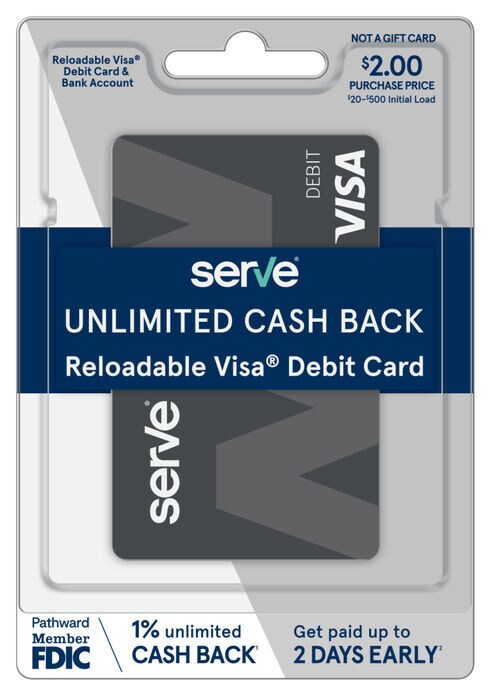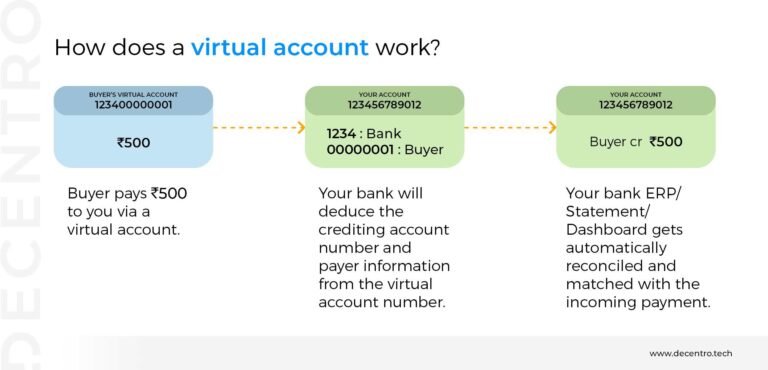Transfer Money from Visa Prepaid Card to Bank Account: Effortless Guide
If you’ve ever found yourself juggling multiple financial accounts, you know how crucial it is to have seamless access to your funds. Transferring money from a Visa prepaid card to your bank account can streamline your finances and give you peace of mind.
Imagine the convenience of having your funds readily available without the hassle of juggling cards or making trips to the bank. In this guide, we’ll walk you through the simple steps you need to take to make this transfer effortlessly.
Discover how to take control of your finances and make your money work for you, all from the comfort of your home. Stay with us, and you’ll soon master this handy financial skill.

Understanding Visa Prepaid Cards
Visa prepaid cards are a convenient financial tool that offers flexibility and control over spending. Unlike credit cards, they don’t involve borrowing money, which makes them a fantastic option for budgeting and managing expenses. Understanding how these cards work can help you make informed decisions about using them effectively.
What Are Visa Prepaid Cards?
Visa prepaid cards are essentially like gift cards but with more versatility. You load them with a specific amount of money, and then you can use them to make purchases anywhere Visa is accepted. They’re not linked to your bank account, giving you the freedom to spend without worrying about overdrafts.
Imagine you’re on vacation; a Visa prepaid card can help you stick to your budget without surprises. Plus, they often come with added benefits like fraud protection, providing peace of mind.
Types Of Visa Prepaid Cards
There are various types of Visa prepaid cards, each designed for different purposes. General-purpose cards are the most common, allowing you to load money and spend it as needed.
Then there are payroll cards, which employers use to deposit salaries directly onto the card. There are also government-issued cards for benefits, providing secure access to funds without the need for a bank account.
Some cards even cater to specific needs, like travel or gifting. Selecting the right type ensures you maximize the card’s potential and suits your lifestyle.
Common Uses Of Prepaid Cards
Prepaid cards are incredibly versatile. Many use them for budgeting, setting aside a fixed amount each month to avoid overspending. They’re also popular for online shopping, offering an extra layer of security.
Travelers often opt for prepaid cards to avoid carrying cash, minimizing the risk of loss or theft. Parents use them to teach teenagers financial responsibility by providing a controlled spending limit.
Whether paying bills, shopping, or traveling, prepaid cards offer a practical solution. How could they fit into your financial strategy?
Visa prepaid cards offer flexibility, security, and control. Understanding their types and uses can empower you to make smart choices, whether for personal budgeting or travel. How can they simplify your financial life?
Setting Up For Transfer
Transferring money from a Visa prepaid card to a bank account requires preparation. Setting up for transfer involves several key steps. These steps ensure a smooth and secure transaction. Get ready to move your funds with ease.
Linking Your Card To A Bank Account
First, connect your Visa prepaid card to your bank account. This link allows funds to flow directly into your bank. Start by logging into your card’s online portal. Look for the option to add a bank account. Enter your bank details carefully. Double-check for accuracy to avoid errors. Confirm the link by following any additional steps provided. This connection is crucial for successful transfers.
Checking Card Balance And Limits
Next, check your card balance. Know how much you can transfer. Some cards have daily or weekly limits. These limits can affect your transfer plans. Log into your account to see current balance information. Ensure the amount you wish to transfer does not exceed these limits. Keep in mind that fees might reduce the available balance. Checking these details in advance helps avoid issues.
Ensuring Account Verification
Verify both your card and bank account information. Verification is key for secure transactions. This step prevents unauthorized access. Banks may require documentation to confirm identity. Provide any necessary papers promptly. Double-check that your account details match those on your card. This match is essential for a successful transfer. Proper verification protects your funds and ensures smooth processing.
Methods For Transferring Funds
Transferring money from a Visa prepaid card to a bank account is straightforward. Check if your card supports direct transfers. Then, follow the bank’s online instructions to complete the transaction.
Online Transfer Options
Online transfer options are popular due to their ease and speed. Many prepaid card providers offer online portals where you can initiate a transfer directly to your bank account. You simply log in, navigate to the transfer section, and follow the prompts to add your bank details. Ensure that your bank supports transfers from your card to avoid unnecessary delays. Have you ever tried this method while sipping coffee at your favorite café?Using Mobile Banking Apps
Mobile banking apps have transformed the way we manage money. They are perfect for transferring funds on-the-go. Check if your prepaid card provider has a dedicated app. Once installed, you can link your bank account with a few taps. The app will guide you through the process, making it as simple as sending a text message. Imagine the freedom of transferring funds while waiting in line at the grocery store.In-person Bank Transfers
For those who prefer a personal touch, in-person bank transfers are a reliable option. Visit your local bank branch and speak to a teller. Bring your Visa prepaid card and your bank account details. The teller will assist you with the transfer, ensuring everything is done correctly. This method is ideal if you want to clarify any doubts or seek advice directly from a banking professional. Have you ever felt more secure knowing someone is there to help you face-to-face? Each method has its unique benefits and considerations. Which one aligns best with your needs?
Step-by-step Transfer Process
Transferring money from a Visa prepaid card to a bank account is simple. Follow these steps to ensure a smooth transaction. This guide will help you navigate the process with ease and confidence.
Initiating The Transfer
Begin by accessing your online account. Most prepaid card providers offer online services. Log into your account using your credentials. Look for the option to transfer funds. This is often labeled as “Transfer to Bank” or similar.
Entering Required Information
Next, you’ll need to provide your bank account details. Enter your bank account number. Include the bank’s routing number. Ensure accuracy to avoid errors. Double-check each number you input.
Confirming The Transaction
Once details are entered, review your transaction. Make sure all information is correct. Confirm the transfer request. Some platforms may ask for a final verification. Complete this step to finalize the transaction.
Potential Fees And Charges
Transferring money from a Visa prepaid card to a bank account may involve fees. These could include transaction charges or service fees. It’s crucial to check with your card provider or bank for specific costs before proceeding.
Transferring money from a Visa prepaid card to a bank account can involve fees. Understanding these fees helps you make informed decisions. Not all transfers come with charges, but some might. This section explores potential fees and how to minimize them.Identifying Possible Fees
Fees can vary based on the card issuer. Common fees include transaction and service fees. Some providers charge a flat rate per transfer. Others may have a percentage-based fee. Check your card’s terms to know the exact charges.Minimizing Transfer Costs
Compare different transfer methods to find cost-effective options. Using your card’s online platform may reduce costs. Some banks offer lower fees for direct transfers. Always look for promotions or discounts to save money.Fee-free Transfer Options
Some providers offer fee-free transfers. Banks with partnerships may waive fees. Look for accounts that support free transfers from prepaid cards. Always read the fine print to ensure no hidden charges.Troubleshooting Common Issues
Transferring money from a Visa prepaid card to a bank account can sometimes hit a snag. You might face various issues during the process. Understanding these common problems and their solutions can make the transfer smoother.
Transfer Delays
Transfer delays can be frustrating. Sometimes, funds might take longer to appear in your bank account. This usually happens due to processing times. Banks have different processing speeds. Check with your bank for their specific timelines. Make sure your card has enough funds before initiating the transfer. Insufficient balance can cause delays.
Incorrect Account Details
Incorrect account details are a common issue. Mistyping your bank account number or routing number can halt the transfer. Always double-check the details before submitting. Even a single digit error can cause problems. If you realize an error after submission, contact your bank immediately. They can help rectify the issue.
Card Limitations
Card limitations can also affect your transfer. Some Visa prepaid cards have restrictions on transfer amounts. Check your card’s terms and conditions. Know your card’s daily or monthly transfer limits. Exceeding these limits can block your transfer. If unsure, contact the card issuer for clarification.
Enhancing Transfer Security
Transferring money from a Visa prepaid card to a bank account enhances security by reducing cash handling. It offers a safer way to move funds digitally, minimizing fraud risk. This method ensures your money reaches its destination securely and efficiently.
Enhancing transfer security when moving money from a Visa prepaid card to a bank account is crucial. Your hard-earned money deserves to be handled with care and precision. Why leave anything to chance when simple steps can protect your transactions and provide peace of mind?Securing Online Transactions
Every time you transfer money online, it’s like sending a digital letter. You want this letter to reach its destination safely. Using strong passwords and two-factor authentication can act as a lock and key for your transactions. Consider the last time you felt secure shopping online—transferring money can be just as safe. Have you ever wondered why some websites have a padlock symbol in the URL bar? It’s a sign of security, ensuring your information remains confidential.Avoiding Fraud And Scams
Fraudsters are like unwanted guests trying to crash your party. They thrive on the unsuspecting. By staying informed about common scams, you can keep them at bay. Think about the time you received a suspicious email—trust your instincts and never share personal details. It’s empowering to know that with awareness, you can protect your finances. Have you checked your accounts recently for any irregularities? Keeping your eyes open can prevent unpleasant surprises.Monitoring Account Activity
Do you remember the satisfaction of checking off tasks from a to-do list? Monitoring your account activity is just as rewarding. Regularly reviewing transactions ensures everything aligns with your expectations. Set up alerts to notify you of any unusual activity, offering instant peace of mind. Wouldn’t it be comforting to know that you can catch potential issues before they escalate? This proactive approach keeps your finances in check and secure. Enhancing security in money transfers isn’t just about technology—it’s about adopting habits that safeguard your assets. How often do you review your security practices? It’s worth doing to protect what’s yours.
Benefits Of Transferring To Bank Account
Transferring money from a Visa prepaid card to a bank account provides convenience and security. It allows easy access to funds for everyday expenses. This method ensures safe transactions and helps manage finances efficiently.
Transferring money from a Visa prepaid card to a bank account can offer several advantages. While prepaid cards are convenient for certain transactions, moving funds to your bank account can enhance your financial flexibility. Let’s explore how this simple action can benefit your financial life.Improved Financial Management
Transferring money to your bank account can significantly improve your financial management. Instead of juggling multiple cards and accounts, you can centralize your funds in one place. This makes it easier to track your spending and savings. Imagine having all your financial activities visible in one bank statement. You can easily categorize expenses, set budgets, and plan for future goals. Does your current financial setup allow you to see the big picture?Access To Additional Banking Features
Bank accounts often come with a host of features that prepaid cards lack. Once your money is in the bank, you can access services like overdraft protection, direct deposits, and automatic bill payments. These features can make managing your day-to-day finances smoother and more efficient. Have you ever been caught off guard by a bill you forgot to pay?Enhanced Money Control
When your funds are in a bank account, you gain better control over your money. You can easily transfer funds between accounts, set up alerts for low balances, and invest in savings or retirement accounts. This level of control can help you make informed decisions about your money. Consider how much easier it is to plan for unexpected expenses or emergencies when you have quick access to all your funds. How prepared do you feel for financial surprises right now? Whether it’s improving your financial oversight, leveraging additional banking features, or gaining better control over your funds, transferring money to your bank account offers tangible benefits. Each step you take towards better financial management can lead to a more secure and stable future.Frequently Asked Questions
How Can I Transfer Money From Visa Prepaid Card?
To transfer money from a Visa prepaid card to a bank account, log into your card account online. Look for transfer options and follow the instructions. You’ll need your bank account details. Some cards may charge a fee or have limitations on transfer amounts.
Are There Fees For Transferring Money To A Bank?
Yes, transferring money from a Visa prepaid card to a bank account may incur fees. These fees vary by card issuer. Check the terms and conditions for specific fee details. Always compare costs before proceeding with the transfer to avoid unexpected charges.
How Long Does The Transfer Process Take?
The transfer process from a Visa prepaid card to a bank account typically takes 1 to 3 business days. Processing times can vary depending on the card issuer and bank. Check with your card provider for specific timeframes to ensure timely transactions.
Can All Visa Prepaid Cards Transfer To Banks?
Not all Visa prepaid cards offer bank transfer capabilities. Some cards have restrictions or require additional steps. It’s essential to check with your card issuer for transfer options. Review the card’s terms and conditions to understand the available services.
Conclusion
Transferring money from a Visa prepaid card to a bank account is simple. Follow the steps we discussed, and you’ll complete the process smoothly. Always ensure your card and bank details are correct. This prevents any unnecessary delays. Double-check each step.
Take your time to avoid errors. If unsure, seek help from customer service. Staying informed ensures a hassle-free experience. Now you’re ready to transfer funds with ease. Enjoy the convenience and security of managing your money efficiently. Keep this guide handy for future transfers.



